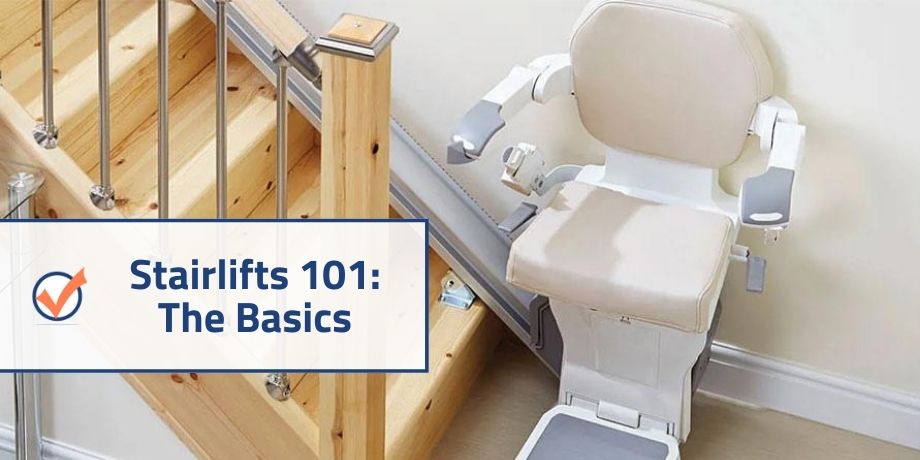
Stairlift Basics
Increase your knowledge of stairlift basics. This article aims to help readers ask better questions of the stairlift representatives with whom they may do business.
Read answers to five stairlift questions covering: major components, operation, safety features, lift capacities and warranty detail.
Stairlift Basics #1: What are the Major Components of a Stairlift?
In order to understand stairlift basics, let’s identify the core elements all leading brands use to craft their stairlifts: the chair, rail, drive system and safety features.
A control switch or paddle to operate the stairlift is generally located on the chairlift’s arm. First, press the control in whichever direction is “upstairs” or “downstairs”. The stairlift will then glide up or down, stopping once it has arrived in a “parked” position. Lastly, releasing the control switch during travel will stop the unit in place until the control in re-engaged.
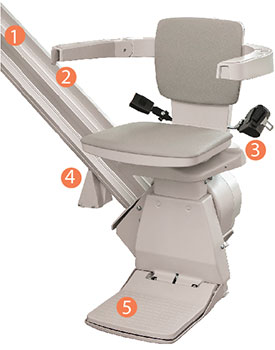
Common Stairlift Components
1) Rail
2) Control Switch
3) Seat Belt
4) Rail Foot
5) Footrest
Even though they may share common components, stairlifts are certainly not all the same. For instance, each stairlift brand engineers these major components, selects the build materials and determines their specific manufacturing process. These decisions consequently determine the stairlift’s ride quality, appearance, cost and dependability over time.
Much like any vehicle can travel from Point A to Point B, all stairlifts will get you up and downstairs – however, the comfort, aesthetics and durability vary widely with each manufacturer.
Stairlift Basics #2: How are Stairlifts Powered?
Stairlifts are generally powered by two, 12v batteries that allow operation even during a power outage. Even though Bruno Independent Living Aids pioneered the technology in North America, it’s now standard with every stair lift manufacturer.
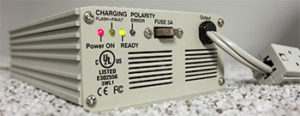 Charge strips, which are integrated into the chairlift rail, recharge the batteries via a battery charger plugged into a household outlet. Additionally, several manufacturers integrate charge strips along the entire stairlift rail. This allows for “continuous charging”, which ensures batteries are recharging anywhere the chairlift stops on the stairs.
Charge strips, which are integrated into the chairlift rail, recharge the batteries via a battery charger plugged into a household outlet. Additionally, several manufacturers integrate charge strips along the entire stairlift rail. This allows for “continuous charging”, which ensures batteries are recharging anywhere the chairlift stops on the stairs.
In the event of a power failure, many stairlifts will be able to provide 10+ round trips depending on the length of the stairs and weight of the rider. On average, stair lift batteries last over three years if used regularly.
Stairlift Basics #3: How Much Weight Can a Stairlift Hold?
300 lbs & Under
On the low end, Acorn stairlift models top out at 280 lbs while Bruno, Handicare, Harmar, Savaria and Stannah all offer stair lift models that lift 300 lbs.
350 lbs – 600 lbs
Handicare, Savaria and Stannah offer multiple 350 lb models, while Bruno offers several 400 lb models. In addition to 350 lb lift capacity models, Harmar also offers a heavy-duty lift that can accommodate up to 600 lbs.
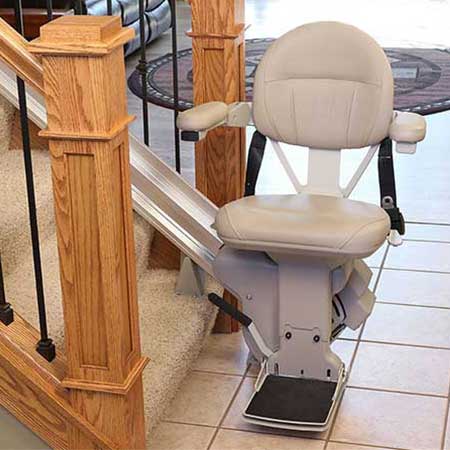
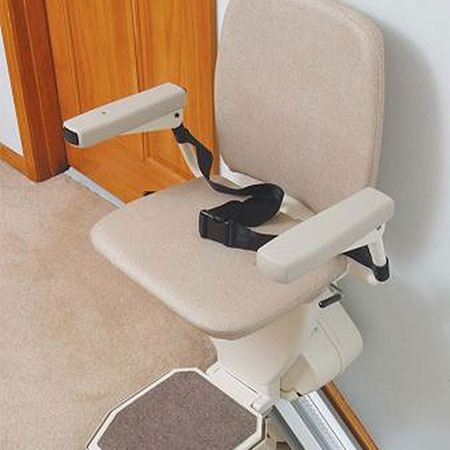
Despite some consumers using their stair lifts to lift groceries, luggage or other items, manufacturers discourage this activity. US code cites that stair lifts may only transport a single rider. By and large, uing a stair lift to carry anything other than a single person may void the manufacturer’s warranty.
Stairlift Basics #4: What’s Covered Under a Stairlift Warranty?
Stairlift warranties provide peace-of-mind for stairlift owners as a layer of protection if service issues arise. However, comparing the warranties of different stair lift manufacturers is not easy. Many warranties use vague wording or state that “terms and conditions apply” while not specifically listing the terms and conditions.
PRO TIP: Warranties are non-transferable. Ask for warranty terms prior to purchasing. In fact, some stairlift manufacturers require the purchase of a service agreement as a requirement of their warranty.
Let’s go over the primary facets of most stairlift warranties:
Major components: The stairlift rail, gear box and motor are generally the “major components” on a stairlift. Manufacturers such as Stannah and Handicare offer a “Limited Lifetime Warranty” on major components. They define “Lifetime” as the expected lifetime of the stairlift – 10 years. Other manufacturers, like Bruno, define “lifetime” as the lifetime of the original owner of the stairlift.
Parts: Parts coverage is often 1 year to 10 years from the date of installation.
Labor: Even if parts coverage is under warranty, it is usually up to the stairlift owner to cover labor costs. According to their website, Bruno covers the cost of labor for the first 30 days after installation.
When purchasing a stairlift through a local dealer, they may layer another level of warranty protection on top of the manufacturer’s original warranty. For example, 101 Mobility – a nationwide network of mobility dealers – offers a complimentary one-year limited service warranty on stairlifts.
Stairlift Basics #5: What Are Standard Stairlift Safety Features?
For the most part, today’s stairlifts have similar safety systems. Obstruction safety sensors stop travel if the stairlift hits an object in its path. All stairlifts also come equipped with a seat belt to secure the rider into the chairlift.
Many stairlift users are concerned about getting off the stairlift at the top of the steps. To ensure a safe exist, swivel the seat until you hear and feel a “click”. This means the seat is locked and safe to dismount.
Brands such as Harmar and Acorn feature chairs with only one swivel/lock position – at 90 degrees – at the top landing. Bruno stairlifts feature the ability to swivel the seat/lock in two positions at the top of the stairs. The Bruno stairlift seat also features an “offset” swivel rotation. This action extends the seat and rider further away from the top of the steps for increased safety.
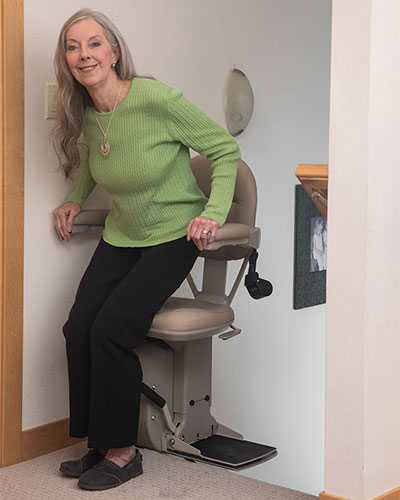
Still have questions? Check out more info on Stairlift Types >>>
– Brands Featured in this Article –





